Clip thinking: characteristics, pros and cons, methods of struggle

"Ok" is an American abbreviation, which is firmly embedded in many languages and cultures of the world, including ours. Few people think about where this combination of sounds came from, at the same time meaning "okay, okay, it will be done" and so on. But according to one of the most common versions, this abbreviation came from the incorrect spelling of the English expression all correct, which translates as “everything is correct”. In the first word "a" was replaced by "o" and got the ubiquitous "ok". This is how the development of a new type of thinking began - clip-based thinking.
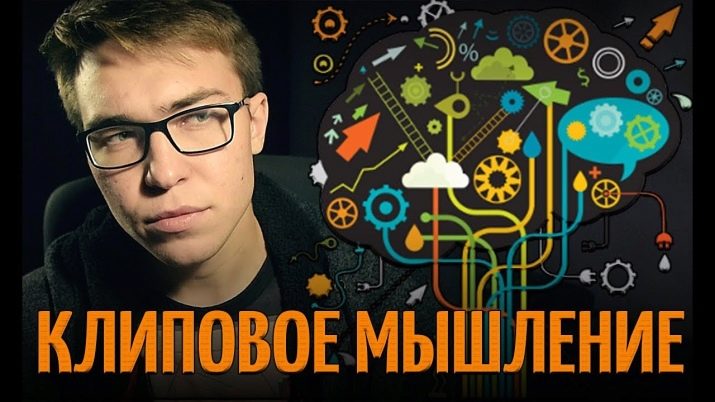
Characteristic
Clip thinking is a modern phenomenon. It is formed on the basis of accepting information in the form of small pieces. We can say that this is such a patchwork quilt, which collects the brain of modern schoolchildren and youth. Its main features:
the absence of a whole picture, the world is viewed in the form of fragments;
bright images;
illogical or even illogical perception of what is happening;
fragmentation of knowledge;
short-term memorization;
taking out of context;
fragmentaryness from the general picture of events.
Some psychologists give this definition to clip thinking - this is a puzzle, after collecting which a person forms a bright, but short-term view of the world around him. Moreover, he can immediately change to a new one, as in a kaleidoscope.
This type of thinking is developed mainly in children. In the age of high technologies, even preschoolers are subject to it. The hearth flares up from some information flashes. They flash before our eyes from the screens of computers, telephones, televisions.And if an adult educated person, for example, is less susceptible to them, then the fragile adolescent and child's psyche absorbs all the fragments of what he saw, like a sponge.
As a result, all knowledge, like a music channel, consists of clips that are not related to one another.
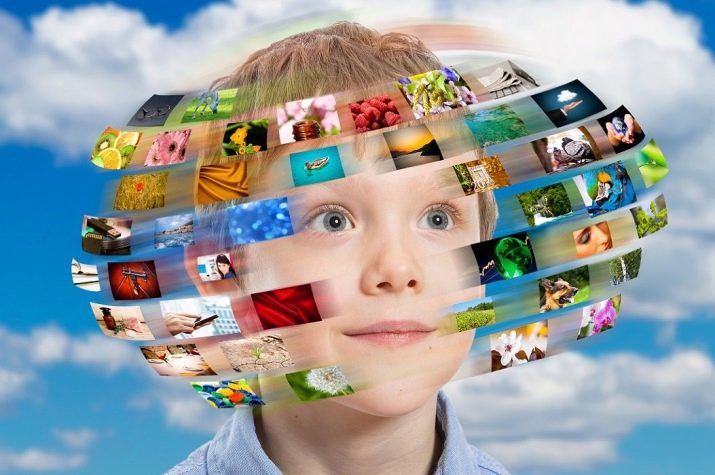
Peculiarities
Clip thinking is momentary. It does not provide an opportunity to deeply delve into the situation. In my head, only her image remains in the form of a bright excerpt - a clip. Which gave the name to this "scourge" of the modern youth environment. Its main "keepers" and managers are the means of communication. The Internet is replete with bright headlines and short videos, after watching which a person comes to the conclusion that he is already quite savvy in this or that issue.
We, without noticing it, digest a lot of information. Our brain is full of various messages, sometimes without any meaning.
So we just litter the pantry in our head.

Signs
The main and scariest sign of clip thinking is expansion of the virtual circle of communication. A person no longer needs to go to visit a friend or to a party of classmates to communicate "live". He has dozens or even hundreds of interlocutors on social networks.
The danger of this lifestyle is that people do not have real friends. And when there is a need to cry in a vest or, conversely, to share joy on the Internet, we get the same "ok". The incorrect English abbreviation remains with us in sorrow and joy, but it cannot replace real emotional communication.
As a result, not receiving proper sympathy or complicity, the person becomes depressed... This often leads to suicide. There are cases when users "stuck" in social networks, not finding understanding or simply not waiting for an answer from their virtual counterparts, took their own lives. It also happens because short replies or comments are not always well received.
After all, the word "ok" has many shades.

Prerequisites
Several factors contribute to the development of clip thinking. Surprisingly, but one of its main prerequisites in our country was the development of democracy and freedom of speech... The information flow pouring on us from all the "irons" sometimes resembles a bursting pipe of large diameter. And initially it seems that there is nothing wrong with the fact that citizens want and can receive more diverse information.
But as a result, this high-speed stream literally knocks us off our feet. We cannot stop him. However, swimming against this current, although difficult, is possible. But first you need to make out all the "holes" that can let this unrestrained stream into our life.

Video clips
Often, words, music and video images combined into one music video do not correspond much to each other. This was especially pronounced in the nineties. When short stories began to fall on us from the screens, filmed under the motto "all the best at once."
Their content was like a set of words and pictures that were devoid of any meaning, but firmly sat in the head of every viewer.

Commercials
Widespread along with the same clips at the end of the last century, the clips have firmly established themselves in our world. Some are still firmly rooted in the subcortex of our consciousness. Bright, often shocking shots changed on the screen, but remained in our head. Finish the phrase - "Euroset, Euroset, prices are just ..." or "It's time for us and it's time for you with a fan factory ..."
The majority of the population of our country can easily cope with this task.
And all because these advertising slogans entered our life, like quotes from classics and even cooler than that, and laid the foundation for mass clip thinking.
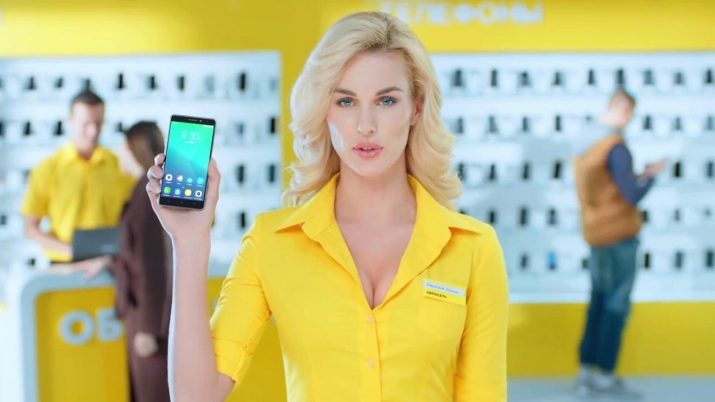
TV news broadcasts
With the arrival of the wind of change in our country, which was launched by the first and only president of the USSR, Mikhail Gorbachev, news feeds were full of a wide variety of messages. If earlier citizens of our country could find out from a news release how much milk a milkmaid from the Progress state farm drank, what machine was produced at the giant Red October plant, what the secretary general said at the next plenum of the Central Committee, now all restrictions have been lifted.
The media were forced to restructure their work. In ten minutes of news, they had to fit the plot about how Princess Diana spent her honeymoon, and where Mikhail Gorbachev and his wife went, and what our first lady Raisa Maksimovna was wearing, and how children live in Africa, and much other.
As a result, the story about this or that event fit into a small TV plot, but always with bright pictures. We did not remember what the heads of state were talking about, but their costumes remained in our memory, like items of our own wardrobe. Friendly print media have also joined such a massive informational tele-attack. Long analytical materials disappeared from the pages of newspapers and magazines. They began to look more like comics. A bright picture is a memorable signature. High-profile headlines have become the main task of journalists... Remember that famous people hawala?

Mail, phone, internet
Modern means of communication have relieved us of the need to turn on the TV every night to get the latest news. Before dialing the desired number, we read the latest messages from news agencies. Before starting to compile a report on a computer or read offers from partners in a post, we get acquainted with new messages on news portals and in social networks. All events are described there briefly and seemingly clearly. But this is nothing more than clip thinking, characteristic of both the authors of these notes and the consumers of their information.
It rarely occurs to anyone to figure out why this happened - it is enough for us that we have learned about the event itself. Few seek to analyze what is happening. It is especially difficult for children and adolescents to do this. Due to their age, they cannot separate the wheat from the chaff. They try to grasp everything at once. As a result, children know everything and at the same time - nothing.
We do not have time to adequately respond to information. And not only on the one that we get from "official" sources. Look at your SMS correspondence or in instant messengers and social networks. Instead of "thank you" it was customary "SPS", instead of "birthday" - "DR", everyone's favorite New Year has become a kind of "NG". Open your child's website. Most likely, you will not understand part of what is written there. Our children communicate in a language we do not understand.
This sounds more like spy codes than a story about how I spent my summer.

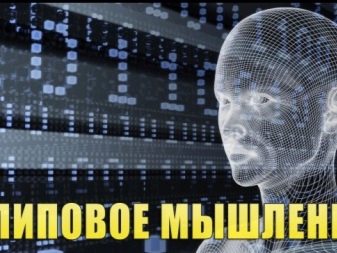
Advantages and disadvantages
Despite the fact that in psychology clip thinking is more often assessed as a negative phenomenon, it also has its advantages.
A person with this type of thinking can quickly and clearly both receive and voice the necessary information. He will not go into details and analyze multiple messages. This makes it possible to shorten the time. Hours of study of literature in the reading room of the library are a thing of the past.
The clip-thinker has a good reaction rate... It is not difficult for him to correspond with several addressees at once. It instantly switches from one topic to another. A few seconds are enough for him to determine what needs his attention most of all, and what should not be paid to him at the moment.
The ability to think in “clips” is beneficial when solving several problems at the same time. In the process of completing homework, a modern child still manages to correspond with friends, choose the music that suits him, he does not need to rummage through textbooks to remember this or that rule. He will instantly find it on the Internet or ask for help from classmates in their VKontakte group. In parallel, he will order pizza, a discounted product in an online store. And of course, all this will not hurt to have a cup of coffee.
The head working through clip thinking does not hurt. Children are not asked to turn off the TV.They do not get tired of information, on the contrary, the child can simultaneously watch his favorite program, flip through the news feed and review messages from friends. He takes from the information flow only the part he needs, and therefore does not overwork.
Clip thinking allows you to assimilate more information in less time. It was clip thinking that created voice assistants like Siri or Alice. Instead of looking for the site you want, you can just make a short request and get what you want right there. There is no need to re-read a long scientific treatise - it is enough to watch a five-minute video material. A commercial for one of the household appliances stores with Mikhail Galustyan describes the ability of most substances to expand when heated much more vividly than any textbook. For his daughter to learn the material, he shows her how a watermelon bursts in a working microwave. This is one of the clearest examples of clip thinking.
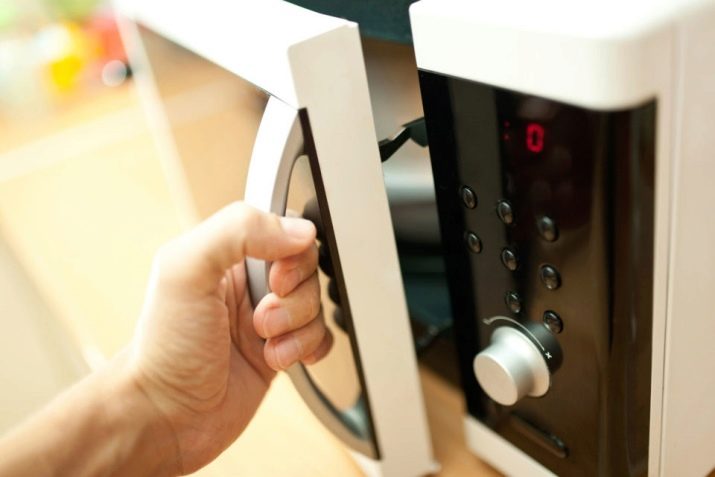
All of the above can be useful in solving various problems, helping to make the implementation of different tasks easier. But there are also disadvantages, which, perhaps, oversimplify life and lead to the inability to act logically.
Clip thinking is the enemy of classical education. Long texts without illustrations terrify most of today's schoolchildren. One kind of "War and Peace" makes them panic. They are used to receiving information quickly and concisely.
This leads to another problem - the inability to analyze. Clip thinking only answers questions that are in the plane of "here and now". Neither preconditions nor further consequences fall within the area of interest of such a way of thinking.
If 10–20 years ago, changes in schools were needed to physically unload the student, now breaks are necessary in order to cope with psychological fatigue. It is difficult for modern children to be concentrated on one topic for a long time. They need constant "reboots" and "archiving of received data".
The rapid achievement of the goal through social networks leads to the fact that a person does not develop memory. There is no need to cram Ohm's law - it will "pull" information from the Internet at any time. It is difficult for him to communicate and clearly express his thoughts in real life, because he has everything "ok" in virtual life.
Clip thinking takes away individuality from a person. What is "good" and what is "bad" he learns from the posts of the stars on their pages. Commercials for him become a guide to action. He is slowly becoming like everyone else. He has no opinion of his own - he is replaced by imposed stereotypes from bright videos with elements of a beautiful life.
Compassion is not characteristic of a person with clip thinking. Indifference is his distinguishing feature. He simply does not have time to react to what is happening. He needs to know too much, and he simply does not have time to worry about this or that occasion. As a result, seeing him lying at the bus stop, he will pass by, deciding for himself that he is simply drunk. The fact that he may have become ill and that it is necessary to call an ambulance will not even have time to come to his mind. And this is already really scary.
Therefore, it is necessary to get rid of the dominance of clip thinking in the head.
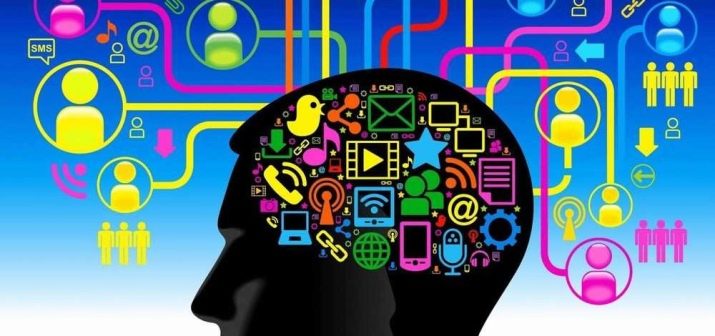
How to get rid of
It is hardly possible to get rid of clip thinking in the modern world. And it makes no sense to fight him up to the complete destruction of the enemy. But every teacher, mom, dad, grandmother and grandfather can direct it in the right direction. And here we must act together, adhering to the following rules.
The time a child spends on the Internet should be strictly limited.... Try to get him interested in other activities. Drama circle, photo circle - everything is welcome. But activity, sports, intellectual hobbies are better.
Strictly monitor what kind of resources your child uses on the Internet. Now many companies offer services such as prohibiting or restricting access to websites on minors' devices. Keep your kids safe from crime news. Keep track of what requests he makes on the Internet. Parental control will help protect you from unwanted consequences.
Instead of computer games such as "shooting" and "catch-up", install on your phone, computer and tablet educational games aimed at improving memory and logic. But don't make any sudden movements. This will cause the child to protest. Organize a competition, the prize of which will be the usual Internet entertainment. For example, make it a rule to first cope with the task from the "smart" application, and only then move on to entertainment activities. Business before pleasure. This old rule is quite suitable when working in today's high-tech environment.
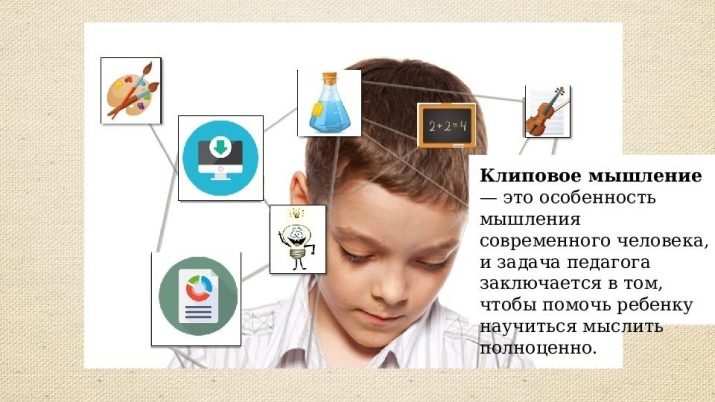
How to avoid?
Above all, surround your baby with care, attention and “right” entertainment from birth. Your home should be filled with books - not electronic, but paper. Read more aloud to your child. Limit your time with gadgets yourself. Show the benefit of "live" communication with literature. After reading this or that work, discuss what you remember, what you liked and what did not. Talk to your child as much as possible.
Inoculate him the habit of expressing your thoughts out loud. Teach him to defend his point of view. Have family discussions about the movie you saw or the behavior of the kindergarten girl. The mispronunciation of words should not be encouraged with general joyful laughter. Correct mistakes in speech.
Learn to express yourself eloquently... Be in nature more often. Show your child what rabbits eat in the zoo or in the village with their grandmother, and not on the tablet screen. Going on vacation, "forget" to connect to the Internet. Visit museums and theaters more often. The child must love live communication. And then to the question, how are you, he will answer "Everything is fine", and not just "Ok".

You can find out some amazing facts about clip thinking below.








